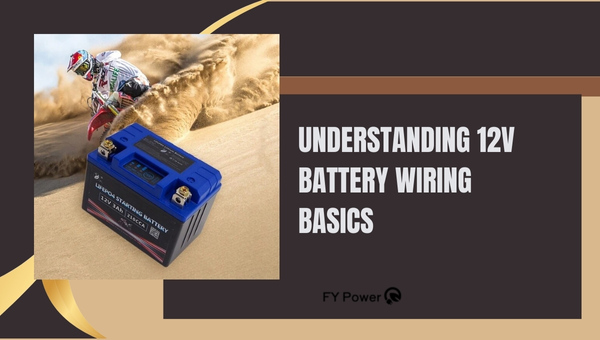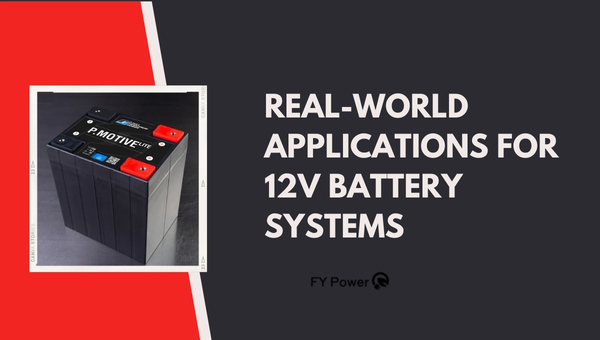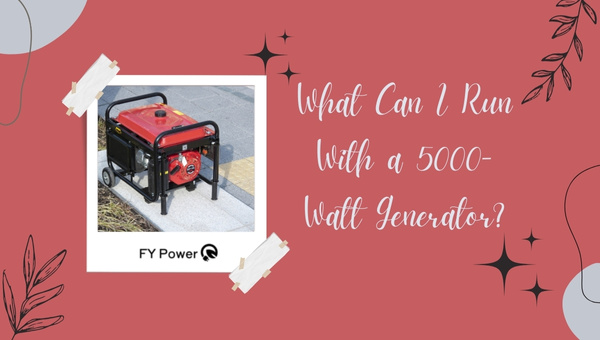When you are trying to figure out how to get more power for your electrical needs, knowing how to do it right is key. It’s not just about connecting wires; it’s a game of strategy. I know you might be asking yourself, “Do I go for more voltage or more capacity?” But don’t worry! If you’ve got a couple of 12V batteries and a plan, I’ll guide you through the 12V battery wiring and help make sense of it all.
To wire a 12V battery in series or parallel means mastering the balance between voltage and capacity. Picture this: wiring batteries in series is like adding extra fuel tanks to your car—the distance (voltage) increases without adding more fuel per tank (amperage stays the same).
On the other hand, a parallel connection is akin to having a wider fuel pipe—more fuel (amperage) flows at the same speed (voltage remains constant). Imagine while preparing for a long road trip; series wiring would let you travel farther without stopping, but parallel wiring would ensure your vehicle can pull heavier loads without stressing.
What You’ll Discover Inside:
- Easy-to-understand explanations of technical terms
- Step-by-step guides on hooking up your batteries
- Real-life applications for 12V battery systems
- Tips on keeping everything safe while tinkering
Understanding 12V Battery Wiring Basics
Wiring 12V batteries is a key task in setting up systems for campers, boats, and solar panels. It’s about connecting batteries to get more power or longer use time.

The Anatomy of a 12V Battery
A 12V battery has two main posts: the positive (+) and negative (-). Each battery is filled with cells that work together to give off electricity. Think of these terminals as the battery’s ‘handshake’—linking up to pass on power.
- Positive Terminal: This is where the electric current starts.
- Negative Terminal: It ends here and completes the circuit.
- Cells: Inside, they create a voltage that adds up to 12 volts.
- Case and Covers: They protect everything inside.
Wiring Batteries in Series vs. Parallel
Connecting batteries in just one line makes a series; side by side, it’s parallel. A series ups voltage but leaves amperage alone. Parallel keeps the voltage the same but boosts amperage.
Series:
- The positive (+) of one meets the Negative (-) of the next.
- Voltage goes up; amperage stays put.
Parallel:
- Positives link to positives, negatives to negatives.
- Amperage rises; voltage stays at 12V.
How to Wire 12V Batteries in Series?
For bigger voltage without changing amperage, we wire in series—a chain of batteries boosting power.
Step-by-Step Guide to Series Wiring
Linking batteries for higher volts means going step by step:
- Start with two or more 12V batteries. Please make sure they’re the same type and charge level.
- Take your first battery; join its positive post with the second’s negative post using a cable.
- Continue this pattern: every positive with the next negative—like dominoes standing in line.
- Keep the last battery’s free negative post for your device or system; start power flow from the first battery’s free positive post.
- Double-check all connections; make them secure without any loose ends.
These steps make one solid line making total volts add up—for example, three gives you 36 volts!
Benefits of Series Wiring
Series wiring refers to connecting electrical components in a circuit sequentially so that the same current passes through each component one after another. There are several benefits to using series wiring in specific applications:
- Voltage Drop Distribution: In a series circuit, the total voltage supplied by the source is divided amongst the components based on their resistance. This can be beneficial when you need to create specific voltage drops across individual components, such as in a string of Christmas lights.
- Simple Design: Series circuits are relatively simple to design and construct because components are connected one after another. This can make troubleshooting and manufacturing easier.
- Current Control: Since the same current flows through all components in the series, controlling the current at one point in the circuit effectively controls it throughout the entire circuit. This can simplify the design of current-sensitive applications.
- Component Protection: Certain components, like fuses or breakers, serve a protective role when wired in series. If the current becomes too high, the fuse will melt or the breaker will trip, opening the circuit and preventing damage to other components.
How to Wire 12V Batteries in Parallel?
If keeping voltage steady while amplifying amp-hours suits you best, go parallel—it expands storage capacity so devices run longer on a single charge.
Clear Instructions for Parallel Connection
Putting together a parallel setup isn’t too hard:
- Line up all your identical-feature batteries—the same types are crucial here too!
- Link all positives together using cables—and do likewise for all negatives too!
- Use end posts—the added-up positives and negatives—to connect things needing juice from the bank you made here today!
- By doing this lot, you’ll see total amps climb while holding at steady-old twelve volts always!
- Finally, confirm whether every cable sits snugly—not daintily on pins—so the current runs freely!
This joins storage space together giving long hours energy-wise!
Advantages of Parallel Wiring
Parallel wiring refers to an electrical circuit configuration where multiple devices are connected across common voltage points, creating multiple paths for the electric current to flow through. Here are some benefits of parallel wiring:
- Consistent Voltage: Each component in a parallel circuit receives the same voltage as the source. This makes parallel wiring suitable for appliances and electronic equipment that require a consistent voltage level to operate correctly.
- Independent Operation: Devices in a parallel circuit operate independently of each other. If one device fails or is switched off, it does not affect the operation of the other devices connected in the circuit.
- Flexible Scalability: Additional devices can be added to a parallel circuit without affecting the performance of the other devices. This is because the total circuit resistance decreases as more branches are added, providing a pathway for additional current if needed, while each device still gets the same voltage.
- Customized Power Distribution: Parallel wiring allows you to customize the power distribution to the requirements of individual electrical components since each can draw the current it needs to operate without affecting the others.
Combining Series & Parallel Configurations
Mixing both series and parallel offers custom mixes perfect for trickier demands not settled by separate methods alone.
Creating a Series-Parallel Network
Curious how both styles merge?
- Get banks ready first—in series or paralleled packs depending on a wanted outcome like so many amp-hours plus face value volt count mirroring gear needs closely!
- Now bridge these formed groupings—an across tie linking each bank acting as a united course having resulted in values intended from steps prior!
- Once connected right it turns out wholly unique fitting special requirements surpassing boundaries single method could deliver solo!
Troubleshooting Common Issues with 12V Battery Wiring
Even careful planners hit snags sometimes when working out their setups—that said solutions aren’t far off really!
Identifying & Solving Connectivity Problems
Find issues? Look closely:
- Check if pos-to-negs wound rightly without crossing lines erringly opposite pos-to-pos/neg-to-negs tossers creating short circuits!
- Are connections gripping firm? Loose parts hinder flow needing tightening ensuring clamps hugging edges plenty!
- Is there dirt anywhere blocking wayward paths clearing corrosives away helps heaps indeed humbly clearing bumps.
Safety Precautions While Working With Electrical Components
When we play with electricity, safety comes first. We have to keep ourselves and our stuff safe.
Ensuring Personal & Equipment Safety
It’s basic stuff, but super important. Put on the right gear and handle everything the right way so you don’t get a nasty shock or fry your things. Here’s what to do:
- Wear safety glasses: Keep your eyes safe from sparks or bits of wire.
- Use insulated tools: They protect you from electric shocks.
- Make sure to turn off all power before starting work.
- Keep water away – it’s not friends with electricity.
- Connect everything tightly to avoid loose wires that could cause short circuits.
- Check for damaged wires or parts – if it looks dodgy, don’t use it.
Real-World Applications for 12V Battery Systems
These little powerhouses serve us in ways we sometimes take for granted – from cruising in boats to soaking up sun rays in solar setups.

Utilizing The Right Configuration For Your Needs
Picking the right setup is key; it means better run times and less hassle later on! Let’s check out how these setups shine:
- Solar Power Systems: Choose series wiring for higher voltage needs; parallel keeps things cool but ups your current for more punch.
- In RVs and Campers, using a parallel setup means lights stay on longer without needing a recharge pronto.
- On boats, series wiring helps with stronger equipment that guides you through the waves like a boss.
FAQs
When might I need to combine series and parallel configurations?
You might want to mix series and parallel wiring if you need both higher voltage and increased capacity. This method can customize the power setup to suit specific needs, like for some solar energy systems or large-scale electronic projects.
Can I mix different capacities or types of batteries when wiring them together?
It’s not ideal. Mixing batteries with different capacities or types can lead to uneven charging and reduce performance and lifespan. It’s best to use identical batteries for optimal results in a series or parallel configuration.
What are some signs that my battery wiring isn’t configured correctly?
If your system shows poor performance, reduced runtime, irregular charging, or overheating batteries, these could be signs of incorrect 12V battery wiring. It’s crucial to check connections and make sure they follow the correct series or parallel setup.
Conclusion
Well, that’s all there is to it. I’ve walked you through the basics of 12V battery wiring and all the details on how to connect them in series and parallel, combine both configurations, troubleshoot common issues, and the safety precautions needed when handling these electrical components.
This guide aims to help you understand how different setups affect voltage and amperage so you can pick the right one for your needs. Whether it’s powering up an RV or setting up a solar panel system, knowing how to wire your 12V batteries properly is key for efficiency and safety.
Key Takeaway Points
- Wiring batteries in series increases voltage; parallel wiring maintains voltage but increases amperage.
- A combination of series and parallel offers customized voltages and capacities.
- Correct troubleshooting ensures your battery configuration works efficiently.
- Safety should always come first when handling batteries to prevent accidents.
- Choosing the proper battery configuration optimizes performance for specific applications.

